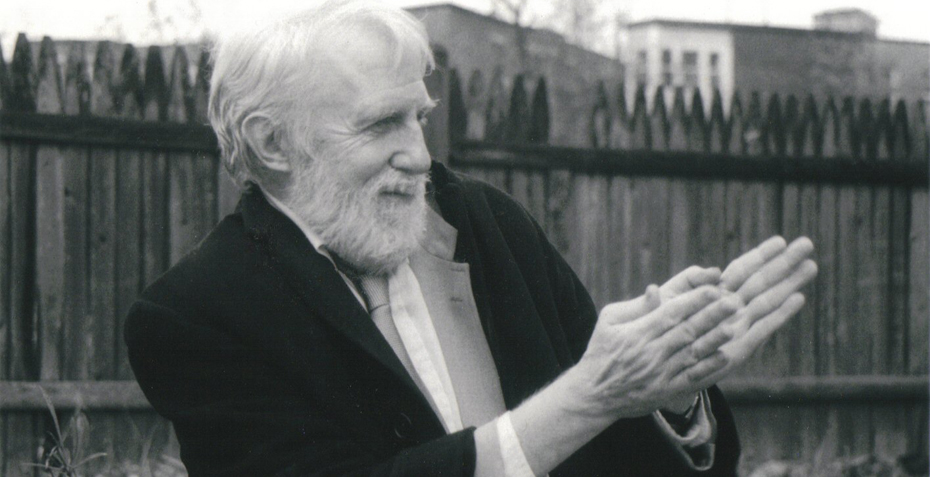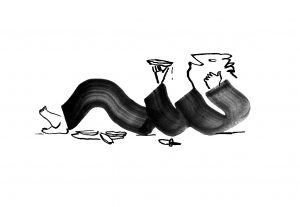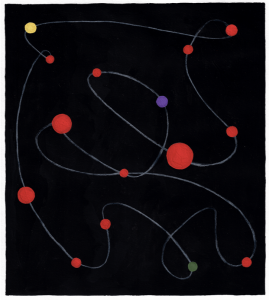Dominic Power gives us an insight into the music of American pianist and composer Ran Blake

The setting is New England in the early years of the twentieth century – a killer stalks a small community, targeting disabled women. In a makeshift movie theatre, a young mute woman (Dorothy McGuire) sits alone, transfixed, while a pianist hammers out accompaniment to the flickering images on the screen. The opening of Robert Siodmak’s Gothic noir masterpiece The Spiral Staircase anticipates the film’s blend of nightmare and obsession, played out in the light and shadow of Nicholas Musucara’s cinematography.
It is usually categorized as third stream – the term created by the composer Gunther Schuller to describe the nexus between jazz and classical music. Stylistically, it doesn’t sit easily with the classic format of the piano-led trio, and Blake has usually preferred to work solo, or to duet with like-minded collaborators – like vocalists Jeannie Lee and Christine Correa, saxophonists Houston Person, Ricky Ford, Clifford Jordan and Anthony Braxton, the guitarist David Fabrisi and the trumpeter Enrico Rava.
As a pianist Blake’s music weaves in many different ingredients. There are echoes of the sanctified rhythms of the Pentecostal church (the 1983 album Suffield Gothic a series of duets with saxophonist Houston Person is suffused with Gospel ecstasy).
But it is Film Noir, with its echoes of German Expressionism that runs through the bloodstream of Ran Blake’s music. It’s there in his first album, The Newest Sound Around, recorded with vocalist Jeanne Lee in 1962, which opens with a shadowy, introspective version of David Raksin’s lushly romantic theme for Otto Preminger’s 1944 film Laura. It’s reflected album titles: Film Noir, Vertigo, The Portfolio of Doktor Mabuse, Duo en Noir. It is music of cinema; not the wide screen Technicolor experience but an intimate cinema of shadow and mystery.
These days the face looking out from the album covers could have stepped from the pages of Herman Melville – a bearded mariner, about to board a New England whaler headed for parts unknown.
“As a pianist Blake’s music weaves in many different ingredients.”
Released in 1946, The Spiral Staircase was to have a profound effect on the twelve year old Ran Blake – he described seeing it eighteen times over a period of twenty days – planting the seeds of a vision that would sustain him over a long career (fifty years, thirty albums and counting) as a pianist and composer and one of the true originals in jazz.
Ran Blake’s music exists somewhere between American vernacular and European classicism, full of irregular spaces and a technique that interrogates melody. Blake is also a custodian of the jazz tradition, with albums of personal tributes to the music of Duke Ellington and Billy Strayhorn (Duke Dreams 1981), Sarah Vaughn (Unmarked Van 1991), Thelonious Monk (Epistrophy 1991) and Horace Silver (Horace Is Blue: A Silver Noir 2000).
He can take a popular song and find new meanings – like the version of Judy from 2003’s Something to Live For, that transforms Al Green’s secular hymn of blissed out surrender into a lyrical enquiry into enduring love. And for all the consistency of its core values, Ran Blake’s music constantly changes and surprises. It is equally at home in the conservatory or a night club but it ideally belongs in an after hours bar at the dark end of the street, situated between a modern art museum and a deserted movie theatre, haunted by the ghosts of a thousand black and white films. The music may evoke the culture of the past but after all these years Ran Blake is still the newest sound around.
Dominic Power is an author and Head of Screen Arts at the National Film & Television School




